What can I say? It's still grey and chilly, and we're nearing the end of what purports to be the coldest and wettest September in Moscow since the 19th century. And my head cold is lingering with quiet insistence, in the sort of way that make me think it's taken up semi-permanent residence and is now rearranging the furniture in my sinuses, browsing through take-out menus thinking about whether to have pizza again, and moaning that the TV reception sucks this far up in the nasal cavity and it might miss the new episode of "Downton Abbey." In short: meh. Nonetheless, I have a few observations I've made which I now share with you.
On the mutability of Russian Names
We've got an contact list at work which is, naturally, populated mostly with Russian names. I had to look someone up a while ago and discovered something that any Russian will find as normal and obvious as 2+2=4, but which seriously blew my mind. I was looking up the correct (Roman alphabet) spelling for the name Ogurtsova (Огурцова). And there, right next to Ogurtsova was listed an Ogurtsov. "Hmmm…" I thought. "That's interesting. We've got two people with almost the same last name." And then I realised that Ogurtsova was paired with a female first name and Ogurtsov was paired with a male one. The plot thickens… I trolled through the whole list and discovered that any last name that ended in A was listed alongside a female first name, and (almost) any last named that ended in a consonant was listed with a male first name. (The only exceptions were for last named that were obviously not Russian, like the Tanya Adams or something like that.)
I quizzed my local go-to person on all things Russian - my co-worker Anna - and she confirmed what I'd begun to suspect. Last names in Russia are not fixed and immutable. They change according to the gender of the person they belong to. So your family name might be Semonov, and you'd call your son Dmitri Semonov, but if you have a daughter her name would be Tatiana Semonova. I'm not sure why, but I find this disturbing. It just feels wrong to think that a last name could be mucked about with so easily. It was the same when I found out that Russian proper names are changed according to the case they're in in a sentence. For instance, the city I'm in is Moscow, in Cyrillic: Москва. But what about this sign?
(This picture is included for illustrative purposes only. I'm not at all sure at this stage whether I heart Moscow or not.)
You can probably all tell that this sign says "I *heart* Moscow", but why does Moscow have a Y at the end instead of and A? Why is it Москву instead of Москва? Well in this sentence, Moscow is the direct object of the sentence, so is declined in the accusative case, meaning that the last A is dropped and replaced with Y. Simple. (Note: Not really.)
And this doesn't just apply to places. It also applies to people's names, and that's what I find unaccountably disturbing. Getting back to young Dmitri Semonov… if we were to talk about Semonov's cat, his name would be declined in the genitive case and become Semonova, which makes him sound like his sister, except that his sister's name in genitive becomes Semonovы. (And now I'm mixing Roman and Cyrillic letters, which is just wrong, but I'm trying to illustrate a point. Michael - if you're reading this: Sorry!). And it's not just last names, it's all names. Anna becomes Annы or Annе or Anny or Annой
My point is this - in English names are a fixed thing. His name is Johnson. This is Johnson's book. We were talking about Johnson. I went to the concert with Johnson. Not so in Russian. Linguistically, I suppose this makes the meaning of a sentence clearer. And when you're looking someone up on a phone list, you can tell with certainty whether it'll be a soprano or a baritone on the other end of the line. But I still can't help but find it unsettling.
On the Odd Habits of Russian Cashiers Regarding Paper Receipts:
This one is really weird. There's a little ritual that occurs almost every time you buy something that produces a paper receipt. I notice it most at the grocery store. Just like at a store in the west, the products get scanned, the total is rung up and I dig out my roubles.
(Aside: Now I even remember to bring all the small change from the dish on my bedside table, which is normally mostly useless because roubles are one of those tiny currencies like Vietnamese Dong (Actually not nearly as bad as Dong.). The smallest note - 50 roubles, is worth about £1, or about $1.50. Coins come in 10руб (20p), 5 руб (10p), 2руб (4p), and 1руб (tuppence). The now-mostly-defunct subdivision of a rouble is called a kopek, with 100 kopeks in a rouble. 50 kopek coins are common and sometimes you find 10 kopek coins, which are worth about 1/5th of an English penny. Anyways, for some reason the clerks at the grocery store get really sniffy if I don't have small change, so now I take everything I've got and painstakingly count it out every week, thus thwarting their chance to look down their noses at me, at least about that one tiny thing.)
But back to the weird thing about receipts. After I've presented my roubles and kopeks and the machine has spit out the long paper receipt, just before the cashier hands it over she will always put a tear in the paper. Sometimes it's a big tear that goes halfway through the paper at the top of the receipt, or sometimes it's a small hole made by folding it over and making a tearing the middle.
Here's one that's been torn in the middle.
So what is The Thing? Here's the best I can come up with, based on a bit of googling. It seems that tearing the receipt somehow marks the transaction as "complete" and may go back to the Soviet Era when shopping was conducted differently.
Supposedly, this practice goes back to the Soviet days, when most stores had the merchandise behind counters and glass cases. To make a purchase, you would ask an employee to get the merchandise for you and prepare a sales receipt, which you take to a second employee/cashier. After you paid, you would take the receipt back to the first employee to pick up your stuff. Then that employee would tear the receipt, to finalize the transaction, and prevent customers from trying to come back and get a second item later for free. (Thanks to Carpe Diem for this explanation.)
Another blogger even went far enough to uncover a Russian statute (Law Number 904 dated 1998) still on the books that apparently states: "Receipts are considered closed with the simultaneous release of goods (rendering of services) and the use of a stamp or tearing [the receipt] in a specified location."
So there you have it. The grocery clerks are simply conforming to Law 904. Which makes me wonder whether Law 905 is something like "Each transaction shall be further verified by the clerk or attendant looking sideways at the purchaser to indicate general disdain or disinterest."
So there you have it. The grocery clerks are simply conforming to Law 904. Which makes me wonder whether Law 905 is something like "Each transaction shall be further verified by the clerk or attendant looking sideways at the purchaser to indicate general disdain or disinterest."
On the Life Underground:
Moscow is a big city in many ways. In particular, and I know I've mentioned this before, they are inordinately fond of very wide streets. This would pose a problem for pedestrians, if weren't for the existence of another particularly common Muscovite phenomenon - the perehod. (Переход. Pronounced with that throat-clearing "H" heard in Loch. "Pair-u-HODE") A perehod is simply a pedestrian underpass that allows one to cross safely beneath a busy street. But it doesn't stop there. It's true that some perehods are quite plain (even, dare I say it, pedestrian! Ha!). But many, especially in busier areas or near metro stations, are lined with tiny shops selling just about anything.
As you can see, it's not exactly Selfridges. Ceilings are low, lighting is generally not great, and the shops are incredibly tiny. In most cases I'd estimate that the square footage of an average kiosk in a perehod could be as little as 4' x 8-10', or maybe a bit bigger. Certainly you'd never have the room to lay down sideways in most.
A shop in my Dinamo perehod.
Most shops in perehods are far too tiny to admit patrons so usually the shopkeeper sits inside, with all his or her wares crammed into the windows on display. Business gets transacted through a tiny hatch, which makes buying in a perehod somewhat intimidating for someone with limited language skills. It means you really need to be able to describe what you want, because pointing can be tricky when the seller has no real line of sight to what you're pointing at.
And what can one buy in a perehod? Almost anything is the quick answer. I took photos and notes at Dinamo and at another large perehod at Lubyanka metro, and here's the list I came up with: women's clothing and undergarments, purses and accessories, magazines and newspapers, jewellery, kids' clothes, umbrellas, ID photos, drinks and junk food, cigarettes, keys and locks, stationery and greeting cards, lottery tickets, mobile phone accessories, linen and bedding, watches, football souvenirs, fresh baked goods, real estate, pantyhose, batteries, electronics and flowers. They're like a whole little subculture (literally sub-, in fact.)
And that's all for this week. Next Saturday I'm off for a quick vacation in Canada and an even quicker stop in London to renew my visa. And though I've only been here for a short time, I'm really looking forward to the break. Let's all just hope that my sinuses smarten up sometime before I get on the trans-Atlantic flight. Please?
And that's all for this week. Next Saturday I'm off for a quick vacation in Canada and an even quicker stop in London to renew my visa. And though I've only been here for a short time, I'm really looking forward to the break. Let's all just hope that my sinuses smarten up sometime before I get on the trans-Atlantic flight. Please?

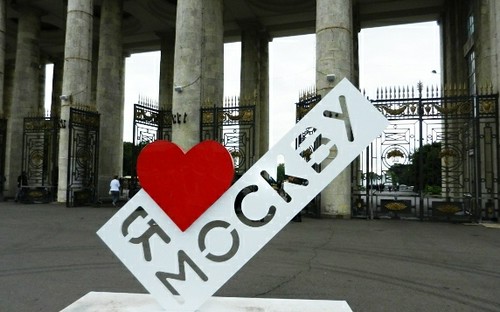
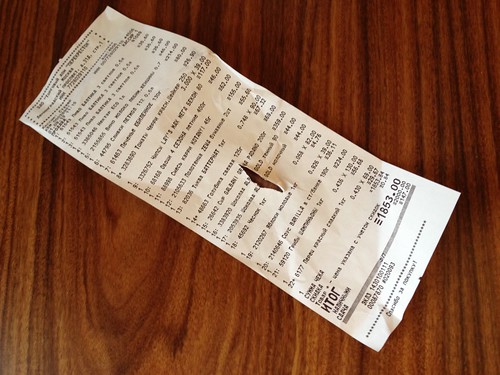
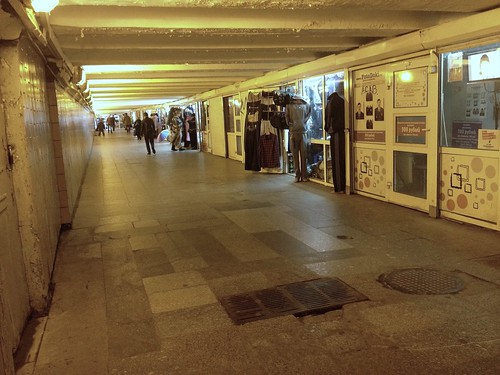
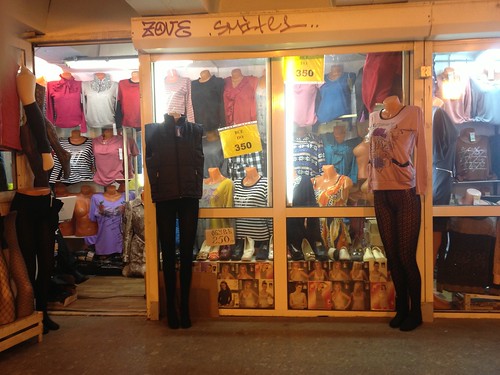
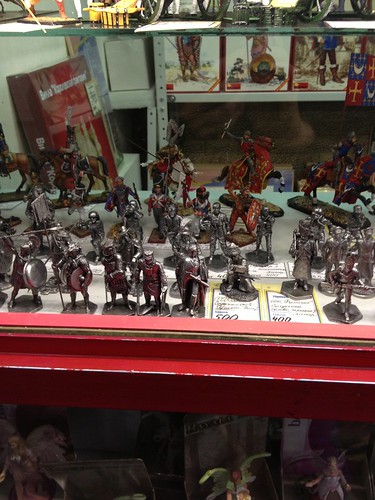
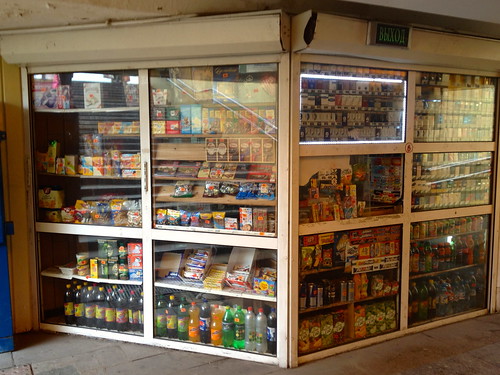
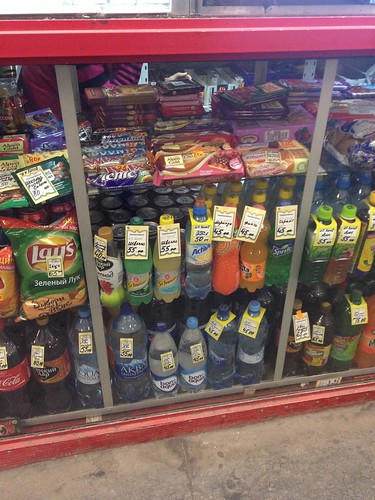


0 Comments:
Post a Comment